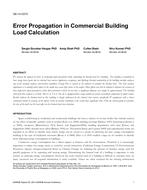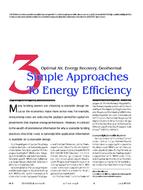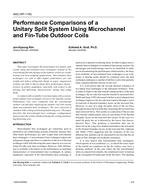Perfectly unidirectional (laminar) flows are rare. Such flows can be attempted either by supplying the air through HEPA filters covering the entire ceiling or by placing restraining panels around the array of supply (laminar) diffusers. In most other cases the flows are “semi unidirectional” – unidirectional only in the core of the supply air stream and recirculating/mixing in the other locations. This study analyzes behavior of such semi unidirectional flows under isothermal and non-isothermal conditions. A CFD model of a virtual test chamber is developed to study the effect of supply airflow rates/discharge velocity on the airflow patterns, velocity, and temperature distribution. A total of four supply airflow rates ranging from 200 cfm (94.4 lps) to 800 cfm (377.6 lps) are analyzed. Non-isothermal analyses are performed for two different locations of sensible heat sources – one with the heat source on a table and the other with heat sources near the ceiling. This study indicates that under isothermal conditions the discharge velocity (flow rate) has little impact on the flow behavior of the supply air jet. For the conditions analyzed, the velocity of the isothermal downward air jet decreases (and becomes non-unidirectional) after traveling about 60 percent of the distance from the discharge. However, in the case of non-isothermal conditions the discharge velocity can significantly affect the directionality of the flow. When a heat source was placed on the table and when the cooling capacity of the supply air jet was four times the cooling load, the air jet could overcome the upward buoyant force of the hot air. When heat sources were placed near the ceiling, the hot air surrounding the heat sources entrained into the downward moving jet causing acceleration in the centerline velocity, which showed to decrease with increasing airflow rate. Interestingly such acceleration was lowest for the lowest supply airflow rate. This study further indicates that for non-isothermal conditions Archimedes Number can be a good initial indicator for estimating the directionality of the supply air jet. This number should be smaller than 0.2 for the cold air jet to travel further without substantially losing its unidirectional behavior.
Citation: 2018 Winter Conference, Chicago, IL, Conference Papers
Product Details
- Published:
- 2018
- Number of Pages:
- 8
- Units of Measure:
- Dual
- File Size:
- 1 file , 1.3 MB
- Product Code(s):
- D-CH-18-C031


